
A torc, also spelled torq or torque, is a large rigid or stiff neck ring in metal, made either as a single piece or from strands twisted together. The great majority are open at the front, although some have hook and ring closures and a few have mortice and tenon locking catches to close them. Many seem designed for near-permanent wear and would have been difficult to remove.
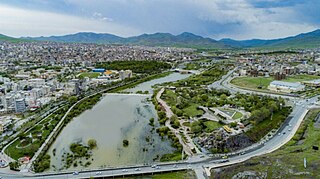
Saqqez, also known as Saghez, Saqez, Saqqiz, Saqiz, and Sakīz, is a city in the Central District of Saqqez County, Kurdistan province, Iran, and serves as both capital of the district and of the county.
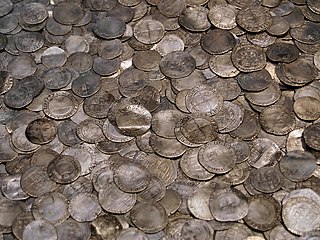
A hoard or "wealth deposit" is an archaeological term for a collection of valuable objects or artifacts, sometimes purposely buried in the ground, in which case it is sometimes also known as a cache. This would usually be with the intention of later recovery by the hoarder; hoarders sometimes died or were unable to return for other reasons before retrieving the hoard, and these surviving hoards might then be uncovered much later by metal detector hobbyists, members of the public, and archaeologists.

The Miho Museum is located southeast of Kyoto, Japan, in the Shigaraki neighborhood of the city of Kōka, in Shiga Prefecture. It is also the headquarters of the Shinji Shumeikai, a new religious group founded by Mihoko Koyama.
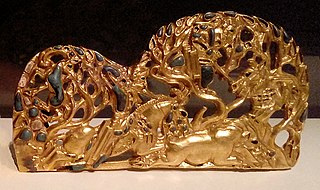
Scytho-Siberian art is the art associated with the cultures of the Scytho-Siberian world, primarily consisting of decorative objects such as jewellery, produced by the nomadic tribes of the Eurasian Steppe, with the eastern edges of the region vaguely defined by ancient Greeks. The identities of the nomadic peoples of the steppes is often uncertain, and the term "Scythian" should often be taken loosely; the art of nomads much further east than the core Scythian territory exhibits close similarities as well as differences, and terms such as the "Scytho-Siberian world" are often used. Other Eurasian nomad peoples recognised by ancient writers, notably Herodotus, include the Massagetae, Sarmatians, and Saka, the last a name from Persian sources, while ancient Chinese sources speak of the Xiongnu or Hsiung-nu. Modern archaeologists recognise, among others, the Pazyryk, Tagar, and Aldy-Bel cultures, with the furthest east of all, the later Ordos culture a little west of Beijing. The art of these peoples is collectively known as steppes art.
![<span class="mw-page-title-main">Ziwiyeh Castle</span> Citadel and archaeological settlement hill in Iran, [[Rojhalat]]](https://upload.wikimedia.org/wikipedia/commons/thumb/b/bb/%D8%AA%D9%BE%D9%87_%D8%A8%D8%A7%D8%B3%D8%AA%D8%A7%D9%86%DB%8C_%D8%B2%DB%8C%D9%88%DB%8C%D9%87_%D8%AF%D8%B1_%D8%B4%D8%A8.jpg/320px-%D8%AA%D9%BE%D9%87_%D8%A8%D8%A7%D8%B3%D8%AA%D8%A7%D9%86%DB%8C_%D8%B2%DB%8C%D9%88%DB%8C%D9%87_%D8%AF%D8%B1_%D8%B4%D8%A8.jpg)

Luristan bronzes are small cast objects decorated with bronze sculpture from the Early Iron Age which have been found in large numbers in Lorestān Province and Kermanshah in western Iran. They include a great number of ornaments, tools, weapons, horse-fittings and a smaller number of vessels including situlae, and those found in recorded excavations are generally found in burials. The ethnicity of the people who created them remains unclear, though they may well have been Iranian, possibly related to the modern Lur people who have given their name to the area. They probably date to between about 1000 and 650 BC.
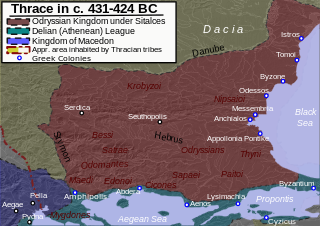
The Thracians were a group of Indo-European tribes inhabiting a large area in Central and Southeastern Europe, centred in modern Bulgaria. They were bordered by the Scythians to the north, the Celts and the Illyrians to the west, the Greeks to the south, and the Black Sea to the east.
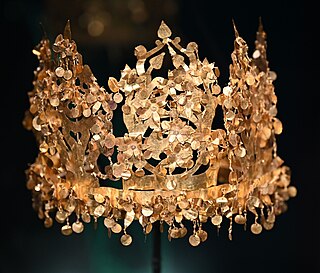
Tillya tepe, Tillia tepe or Tillā tapa is an archaeological site in the northern Afghanistan province of Jowzjan near Sheberghan, excavated in 1978 by a Soviet-Afghan team led by the Soviet archaeologist Viktor Sarianidi. The hoard found there is often known as the Bactrian gold.

The Department of the Middle East, numbering some 330,000 works, forms a significant part of the collections of the British Museum, and the world's largest collection of Mesopotamian antiquities outside Iraq. The collections represent the civilisations of the ancient Near East and its adjacent areas.

The Oxus treasure is a collection of about 180 surviving pieces of metalwork in gold and silver, most relatively small, and around 200 coins, from the Achaemenid Persian period which were found by the Oxus river about 1877–1880. The exact place and date of the find remain unclear, but is often proposed as being near Kobadiyan. It is likely that many other pieces from the hoard were melted down for bullion; early reports suggest there were originally some 1500 coins, and mention types of metalwork that are not among the surviving pieces. The metalwork is believed to date from the sixth to fourth centuries BC, but the coins show a greater range, with some of those believed to belong to the treasure coming from around 200 BC. The most likely origin for the treasure is that it belonged to a temple, where votive offerings were deposited over a long period. How it came to be deposited is unknown.

The Quimbaya (/kɪmbaɪa/) were a small indigenous group in present-day Colombia noted for their gold work characterized by technical accuracy and detailed designs. The majority of the gold work is made in tumbaga alloy, with 30% copper, which colours the pieces.

Oscar White Muscarella was an American archaeologist and former Senior Research Fellow at the Metropolitan Museum of Art, where he worked for over 40 years before retiring in 2009. He specialized in the art and archaeology of the Ancient Near East, in particular Ancient Persia and Anatolia. Muscarella was an untiring opponent of the Looting of ancient sites and earned a reputation as the conscience of the discipline. He received his Ph.D. from the University of Pennsylvania in 1965.
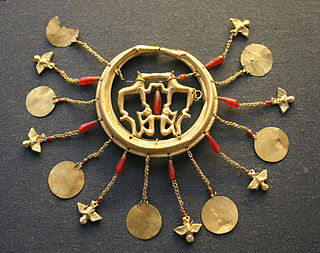
The Aegina Treasure or Aigina Treasure is an important Minoan gold hoard said to have been found on the island of Aegina, Greece. Since 1892, it has been part of the British Museum's collection. It is one of the most important groups of Minoan jewellery.

The Carthage Treasure is a Roman silver hoard, which was found in Tunis, Tunisia, at the site of the ancient city of Carthage. The treasure principally consists of silver tableware and jewellery, most of which is now held at the British Museum.

The Lampsacus Treasure or Lapseki Treasure is the name of an important early Byzantine silver hoard found near the town of Lapseki in modern-day Turkey. Most of the hoard is now in the British Museum's collection, although a few items can be found in museums in Paris and Istanbul too.

The Boscoreale Treasure is a large collection of exquisite silver and gold Roman objects discovered in the ruins of the ancient Villa della Pisanella at Boscoreale, near Pompeii, southern Italy. Consisting of over a hundred pieces of silverware, as well as gold coins and jewellery, it is now mostly kept at the Louvre Museum in Paris, although parts of the treasure can also be found at the British Museum.
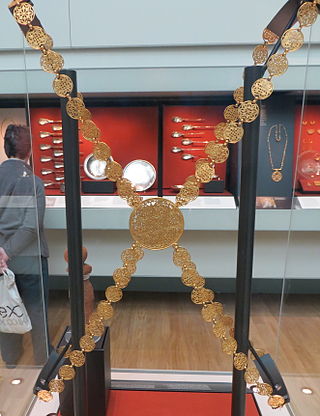
The Asyut Treasure is the name of an important Byzantine hoard of jewellery found near the city of Asyut, central Egypt. Discovered in mysterious circumstances in the early twentieth century, the treasure is now divided between the Kunstgewerbemuseum in Berlin, the British Museum in London and the Metropolitan Museum in New York City.

Sakez also known as Sekez, Sekakez and Scyth (Eskit) was a sizable urban settlement and historical ancient city in the first millennium BC in Iran. It was the political and military capital of Scythians in western Iran and one of the few ancient cities that has been the residence of people and the center of civilization and it still is. Archaeologists believe that the present-day city of Saqqez in Kurdistan is the remnant of the city of Sakez, which takes its name from the Scythians and, with a slight change in pronunciation, is still called by the same name.



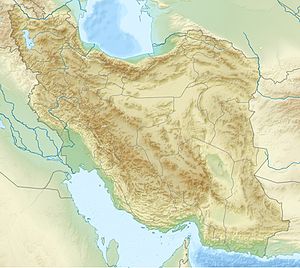
























![<span class="mw-page-title-main">Ziwiyeh Castle</span> Citadel and archaeological settlement hill in Iran, [[Rojhalat]]](https://upload.wikimedia.org/wikipedia/commons/thumb/b/bb/%D8%AA%D9%BE%D9%87_%D8%A8%D8%A7%D8%B3%D8%AA%D8%A7%D9%86%DB%8C_%D8%B2%DB%8C%D9%88%DB%8C%D9%87_%D8%AF%D8%B1_%D8%B4%D8%A8.jpg/320px-%D8%AA%D9%BE%D9%87_%D8%A8%D8%A7%D8%B3%D8%AA%D8%A7%D9%86%DB%8C_%D8%B2%DB%8C%D9%88%DB%8C%D9%87_%D8%AF%D8%B1_%D8%B4%D8%A8.jpg)












